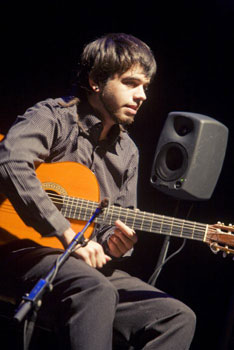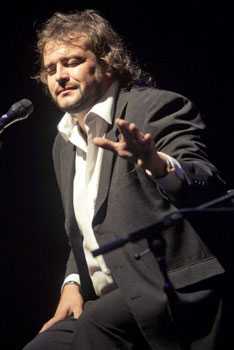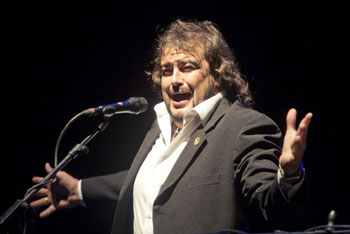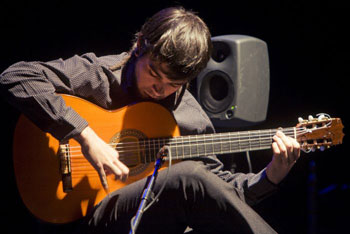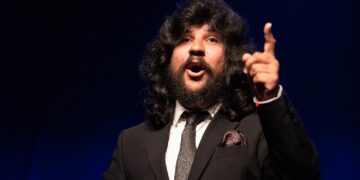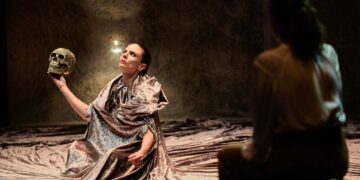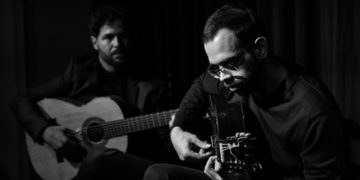|
MIGUEL DE TENA Y JAVIER CONDE QUARTETO |
||||
|
SPECIAL BIENAL DE FLAMENCO DE SEVILLA 2008 Text: Gonzalo Montaño Peña The Alameda theater where the series “El Flamenco que Viene” was carried out, made good on its name and brought something that without a doubt is destined to become what flamenco is within a very short time. A double program, on the one hand, winner of the Festival de Cante de Las Minas de la Unión in 2006, Miguel de Tena the young man from Extremadura and faithful follower of the cante of Manuel Vallejo, and in the second part, Javier Conde, also from Extremadura, a child prodigy of the flamenco guitar.
At the press conference the day before, the singer advised that what he sings is Vallejo and that was what he intended to do. And so it was, the corpulent Miguel de Tena brought a classic repertoire that included farruca, mineras, tangos, bulería cuplé, zambra and fandangos. His fine sharp voice doesn’t seem to go with the physical appearance of this man who made the audience jump from their seats. The people were cheering at every line of singing, and this is a man who has no problem stepping away from the mike to show off his ability, something audiences seem to like very much. With “fandangos personales” to the compas of bulería por soleá, Miguel de Tena closed out a recital that left no one unmoved. Without a doubt, the surprise came afterwards with guitarist Javier Conde’s recital, a boy not yet twenty but who plays as if he’s been doing it for fifty years. The young man brought a repertoire based on classic compositions of Serranito, Sabicas and other contemporary guitarists such as Riqueni. Quite a task to take on pieces from accomplished virtuoso guitarists and manage to pull it off. The recital opened with alegrías of Serranito, with extremely clean sound, a powerful touch, and although he was playing someone else’s music, the young man from Cáceres gave a decidedly flamenco spin. Then, Paco de Lucía’s rondeña in which Javier’s right hand was lightning fast without losing clarity in the picados, and the audience could hardly believe this boy’s command of the instrument. He also proved to be completely on top of harmony in compositions such Riqueni’s garrotín, and tremolo and arpeggios in Sabicas’ soleá and the granaínas of Gerardo Núñez.
Almost near the end of the recital, the second guitarist appeared, and then I understood everything. It was his father José Antonio Conde; it’s very difficult for a young man of Javier’s age to play an instrument like that without a demanding and knowledgeable father. This is the case of Manolo Sanlúcar and Paco de Lucía, and there are also well-known cases outside flamenco. To close out the performance, Javier Conde played an original composition, a rumba, perhaps a little too reminiscent of Paco de Lucía. I was left with the desire to hear this guitarist accompany cante. But I’m sure there will be many opportunities to see him again, because this young musician is clearly the future of flamenco. |
Descubre más desde Revista DeFlamenco.com
Suscríbete y recibe las últimas entradas en tu correo electrónico.


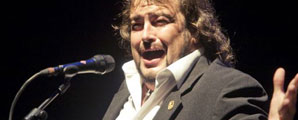 XV BIENAL DE FLAMENCO DE SEVILLA
XV BIENAL DE FLAMENCO DE SEVILLA